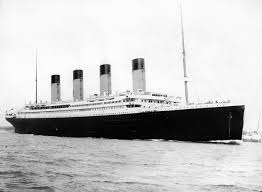Compulsive Motivation
| Creative Motivation
|
Motivation by Stress |
Desire or Compulsion? | Being Led Astray |
Carrot and Stick
^ Motivation by Stress
Courage and fear are both capable of motivating us, but they pull us in totally opposite directions.
Fear makes us run and hide, while courage lets us be true to our real - fearless and free - self.
A similar contrast is found with two equally familiar forces; love and anger. Anger pushes us to be hostile, while love lets us be at one with the world and with ourselves.
This website - like the accompanying book The Creative Self
- examines how forces like fear
and anger sabotage our true, creative nature and will, and boss us about like we were mere servants.
^ Desire or Compulsion?
Desire can be an invaluable emotion, but when powered by stress it becomes as bullying as fear
and
anger.
A desire that's creative exists alongside love and joy, and can power appreciation and ambition
without making us desperate or clingy.
Compulsive desire, on the other hand, is the "forward gear" to fear's "reverse", and makes us chase after - and grab onto - the things that fear
makes us scared of losing.
Compulsive desire can make us obsessed over - and addicted to - given "desire objects”. By these "objects" we can find ourselves so driven to distraction that we end up deceiving, cheating or trampling our way towards making them our possession.
When compulsive desire
is at the helm, though we might feel ourselves moving forward, our actual
free will becomes effectively sidelined, such that we come to resemble a blindly (unconsciously) obedient, remote-controlled toy.
Whatever the "stress forces" that steer us, the ultimate outcome is the same: the suppression of our true, creative self.
^ Being Led Astray
When we're led by "stress forces" like compulsive desire, disaster tends to follow sooner or later.
An example of this was the passenger liner Titanic. Titanic's owners, White Star Line, were so desperate for "success" and fame that they leant on the skipper, Captain Smith, to take a shortcut close to the North Atlantic ice - in order to break the speed record for the crossing.
^ Carrot and Stick
"Carrot and stick" is one of the most popular techniques by which to motivate. Carrot - a cash bonus, for example - is dangled as a reward for "good performance". Meanwhile, stick -
a financial penalty, perhaps - is applied to whomever falls short of expectations.

Transmitted through "stress forces" like
compulsive desire
(carrot) and
fear
(stick), carrot and stick comes at great cost to our creativity and even safety.
Carrot and stick is widely hailed as a classic motivational technique, though its real effectiveness is in imposing control and conformity. Indeed, the psychological literature refers to it as the so-called controlled
kind of motivation.
It's ironic, therefore, that its ultimate effect is to leave things out
of
control. Besides Titanic, we can take the example of the 2008 financial crash that followed an aggressive sales bonus culture that, in turn, fuelled a runaway lending boom.


